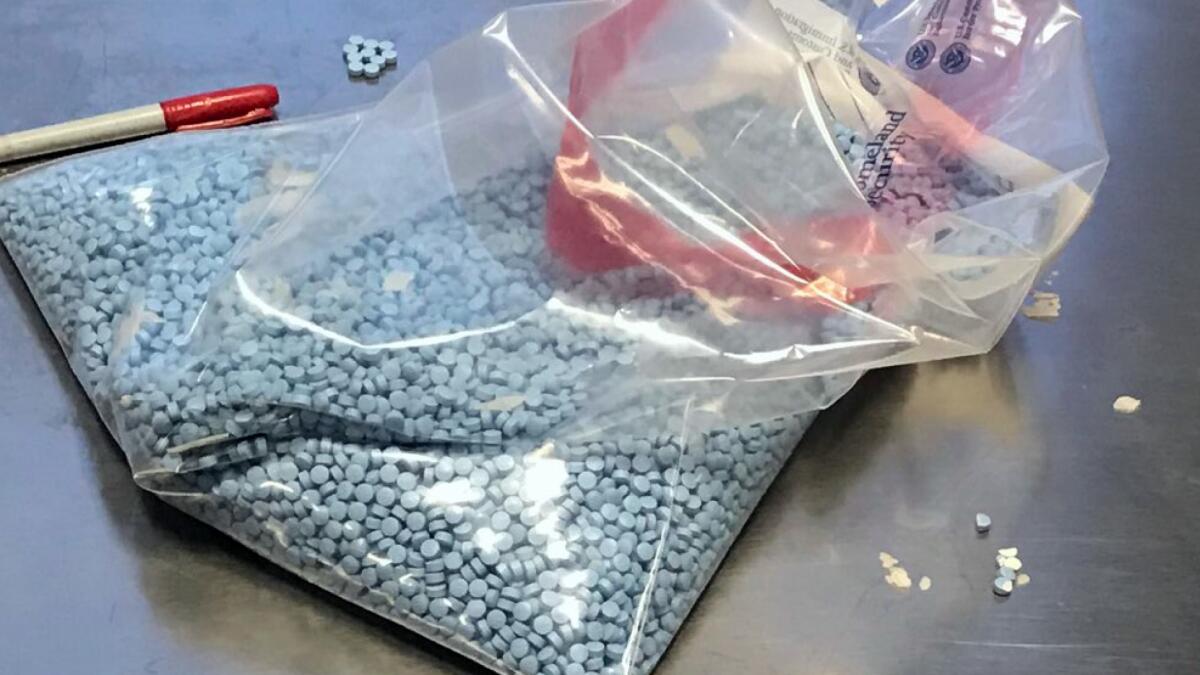Case of fatal 2016 fentanyl overdose at Newport Beach bar handed to jury

- Share via
Prosecutors claimed during closing arguments Tuesday that a former manager at a Newport Beach bar supplied fentanyl that left one person dead and three people unconscious in 2016, but the defendant’s attorney noted none of the opioid was in his possession and suggested others could have sold the drug.
Sean Robert McLaughlin, 48, of Aliso Viejo, was the security manager at the now-closed business, American Junkie, early Friday, Nov. 18, 2016. It was packed when, at about 1 a.m., four people who later tested positive for furanylfentanyl collapsed in the nightclub.
Paramedics took three of them to hospitals. One, then 25-year-old Ahmed Said, died of acute furanylfentanyl intoxication, according to Orange County Coroner’s officials.
McLaughlin was working at the time and was “there to keep everyone safe,” assistant U.S. attorney Melissa Rabbani said before the jury and judge David O. Carter Tuesday. “But he was more focused on his side hustle, which was being the resident drug dealer at American Junkie.”
Following the incident, patrons were cleared from the bar, police questioned staff and searched for evidence. They found cocaine in a vacuum-sealed pouch, amber glass vials and small baggies decorated with scorpions stored in an employee locker. Other drugs were also found there, including pills that looked like Adderal but were actually methamphetamine.
Former employees testified that the defendant had been seen using that locker, which was secured with his lock. Forensics experts said his DNA was also found inside.
However, no furanylfentanyl was discovered at the bar, nor during a search of McLaughlin’s home.
The defendant was seen going into an area on the second floor of the bar while other employees were speaking to police below. Prosecutors claim he collected whatever fentanyl might have been stored at the business and then either flushed it down a toilet or took it with him to dispose of elsewhere. McLaughlin’s lawyer, Dan Chambers, dismissed those suggestions as speculation.
Attorneys for the U.S. also brought Adel Aziz, a patron at American Junkie that evening, to the witness stand. He said he heard McLaughlin ask someone “what did you give me?” during a phone call outside of the bar as police were investigating the scene. But the defendant’s attorney, Dan Chambers, said that conversation did not appear to be registered in call logs from that evening.
Prosecutors did present documentation of numerous phone, text and social media exchanges during the days leading up to Said’s death in which McLaughlin told people who appeared to be looking for drugs that he could supply them. They also shared portions of his online browsing history, which included visits to sites on how to test and cut cocaine, as well as another that sells glass vials similar to the ones found containing cocaine at American Junkie.
Rabbani, along with fellow U.S. assistant attorney Bradley Marrett, described McLaughlin as a fledgling drug dealer. She said the defendant “had very little idea what he was doing, and that is why people got hurt that night. Because he was sloppy.”
Jurors heard testimony from two people who were seen in surveillance footage with Said and also suffered overdoses at the bar, Josh Selley and Daron Muratyan. They both said they purchased what they thought was cocaine from McLaughlin, and that he was the only person they bought drugs from that evening.
Selley was seen in security footage handing cash to McLaughlin near an elevator on the second floor of the building at 12:28 a.m., about 25 minutes before he, Said and Muratyan lost consciousness. However, during testimony, he claimed the money he gave the defendant was payment for bottle service.
Chambers noted both Selley and Muratyan denied having any prior relationship with Said even though “they clearly talked and interacted that night,” and were seen going in and out of the restroom at American Junkie together.
He and prosecutors suggested that because there were no cameras present in the restroom to record their movements that was likely where they chose to obtain and use the drugs later found in their systems.
Chambers said Selley, Muratyan, Adel Aziz and others lied on the witness stand. He went on to claim that Newport Beach police failed to identify several other people seen in surveillance footage who could have sold drugs to the victim, and said detectives had not even watched the video before taking his client into custody.
Records indicate Said had sent a message to another person at the bar, Derrek Elias, asking if he would be able to purchase “white girl,” a slang name for cocaine. Chambers claimed Said was caught on camera exchanging money for drugs with Elias at 12:37 a.m., but prosecutors say it was not possible to tell from the footage if anything was in either of their hands in that moment.
About 15 minutes later, Said, Selley and Muratyan lost consciousness in the bar. That’s about the amount of time it takes for people who snort furanylfentanyl to begin showing the effects of the drug, according to toxicology experts.
Furanylfentanyl is an opioid significantly more powerful than morphine that is mostly identical in structure to fentanyl. It is a designer drug that had only recently emerged on the street at the time of Said’s fatal overdose. But its use quickly spread, according to expert witness Kevin Shanks of Axis Fornesic Technology, one of the few labs that were able to screen for furanylfentanyl in 2016.
“It was becoming so prevalent that we had to develop new tests for it,” he said.
All the latest on Orange County from Orange County.
Get our free TimesOC newsletter.
You may occasionally receive promotional content from the Daily Pilot.




